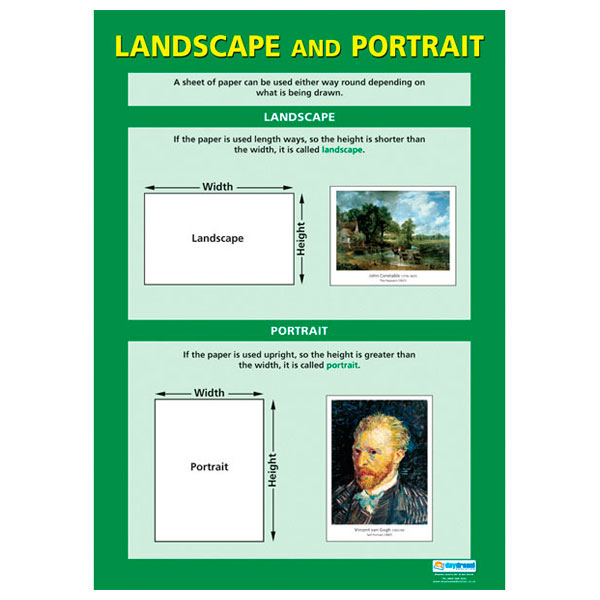

In the 1932 edition of the Oxford English Dictionary, the entry for " frontispiece" gave: "The frontispiece … may be printed either upright (termed portrait) or broad way (termed landscape). Landscape viewing, on the other hand, visually caters to the natural horizontal alignment of human eyes at the same time landscape details are much wider than they are taller, and is therefore useful for portraying wider visuals with multiple elements that need to be observed simultaneously.

It is also preferred for smartphone use, as a phone in portrait orientation can be operated easily with one hand. Portrait mode is preferred for editing page layout work, in order to view the entire page of a screen at once without showing wasted space outside the borders of a page, and for script-writing, legal work (in drafting contracts etc.), and other applications where it is useful to see a maximum number of lines of text. By default, most computer and television displays use landscape orientation, while most mobile phones use portrait orientation (with some flexibility on modern smartphones to switch screen orientations according to user preference). Most paper documents use portrait orientation.
#LANDSCAPE VS PORTRAIT SIZE TV#
Many types of visual media use landscape mode, especially the 4:3 aspect ratio used for classic TV formatting, which is 4 units or pixels wide and 3 units tall, and the 16:9 aspect ratio for newer, widescreen media viewing. īesides describing the way documents can be viewed and edited, the concepts of "portrait" and "landscape" orientation can also be used to describe video and photography display options (where the concept of " aspect ratio" replaces that of "page orientation"). The term "landscape orientation" also reflects visual art terminology, where pictures with more width than height are needed to fully capture the horizon within an artist's view. The term "portrait orientation" comes from visual art terminology and describes the dimensions used to capture a person's face and upper body in a picture in such images, the height of the display area is greater than the width. The two most common types of orientation are portrait and landscape. Page orientation is the way in which a rectangular page is oriented for normal viewing. Selecting a region changes the language and/or content on monitor in portrait orientation to the left and a landscape main display in the center “I’ll look for ways that I can break it up into the rule of thirds.” “I try as much as I can to get the golden ratio incorporated in my image somehow,” says Rashid. Other considerations include your shooting style, the composition, the perspective of the scene, the distance from the subject in the scene, the scene overall (foreground and background), and the emphasis you want to place on the subject. But when I’m out in the desert, it’s wide-open flat spaces and I want to show the size and distance, so I’ll shoot landscapes.” A horizontal orientation emphasizes the expanse or tranquility of farmlands, prairies, woodlands, and other outdoor spaces. “The vertical orientation exaggerates the height. Everything is really big and tall and I want to be able to show that,” photographer Aaron Rashid says. “When I’m in the city, a lot of the stuff I do is portrait style. Once you know the intended use for your image, choose the main subject - a person or object you want to draw attention to - and decide what you want to emphasize and what to exclude to capture the emotion you want to evoke.


 0 kommentar(er)
0 kommentar(er)
